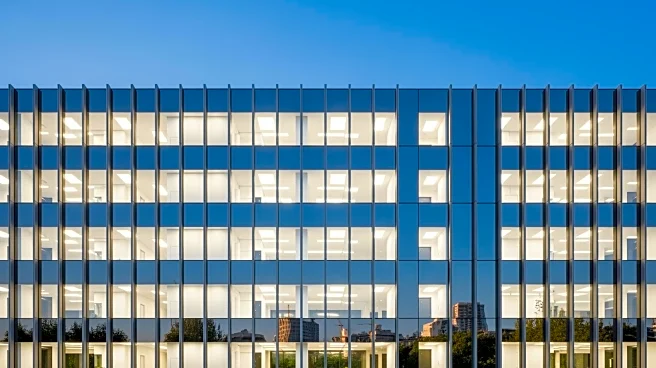What's Happening?
The U.S. office market is experiencing a resurgence, with vacancy rates declining for the first time since early 2019, according to JLL's Q3 office market dynamics report. The national office vacancy rate fell
by five basis points to 22.5% at the end of the third quarter. Leasing activity has reached 82% of pre-pandemic levels, with gross leasing volume increasing by 6.5% quarter over quarter to 52.4 million square feet. Eighteen markets have surpassed pre-pandemic leasing activity, and seven markets have returned to more than 90% of pre-pandemic levels. The report highlights a stabilization in demand and an expansion of office footprints, despite minimal new development. Large-scale transaction activity has also returned, with significant growth in leases over 100,000 square feet.
Why It's Important?
The decline in office vacancy rates and the increase in leasing activity signal a potential recovery in the U.S. office market, which has been struggling since the pandemic. This trend could have significant implications for the commercial real estate industry, as it suggests a renewed demand for office space. The scarcity of Tier 1 and trophy stock, coupled with the tightening of second-generation spaces, may drive up rental rates, particularly in Tier 2 markets. This recovery could benefit landlords and investors, while tenants may face higher costs as demand increases. The shift towards more stringent office attendance policies by major companies could further fuel this demand.
What's Next?
As the office market continues to recover, stakeholders will likely monitor the availability of high-quality office spaces and the impact of rising rental rates. The potential for an extended period of declining vacancy rates could lead to increased investment in office developments. Companies may need to adjust their real estate strategies to accommodate changing market conditions, while policymakers and urban planners might focus on supporting sustainable growth in the commercial real estate sector.











